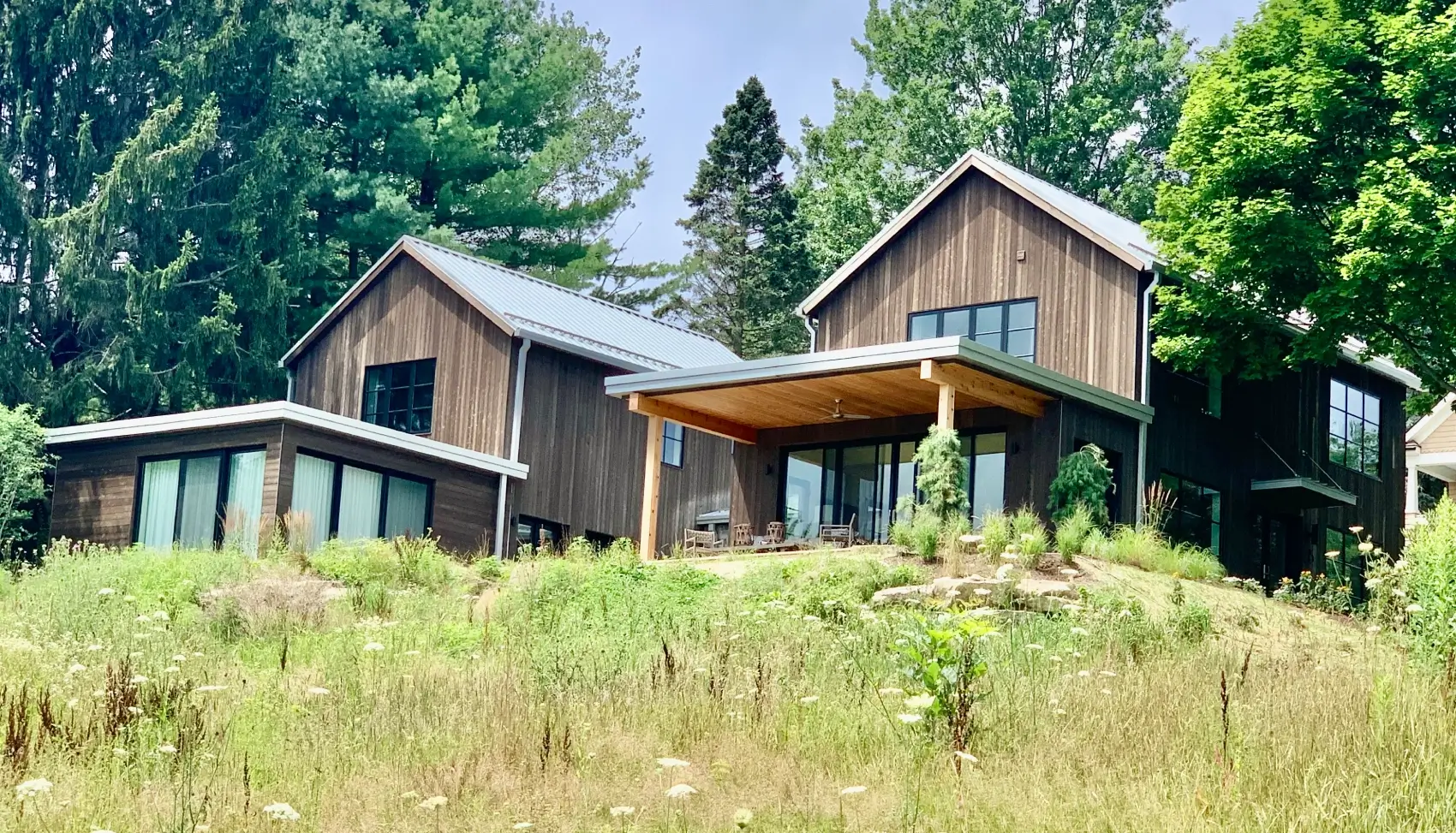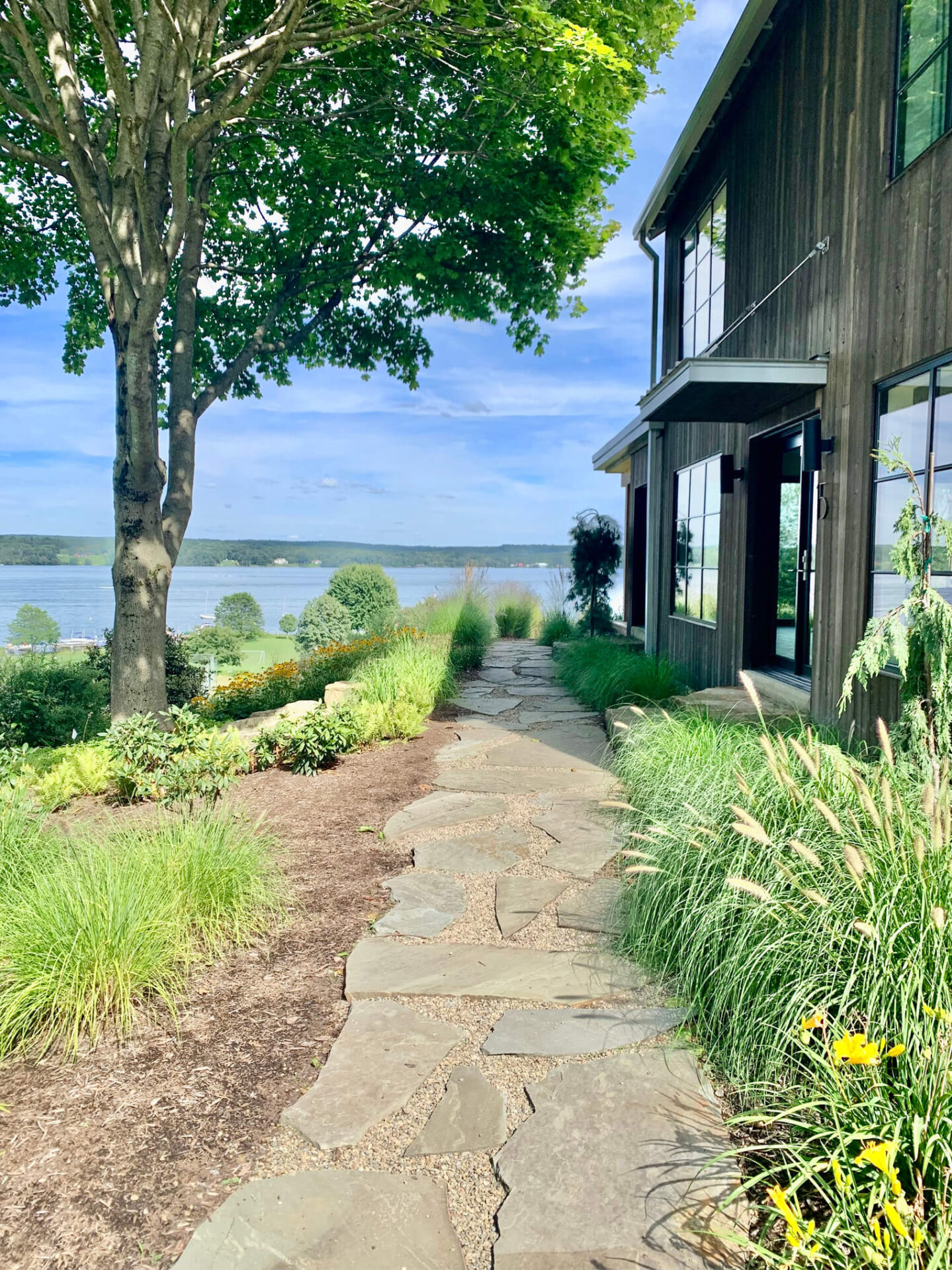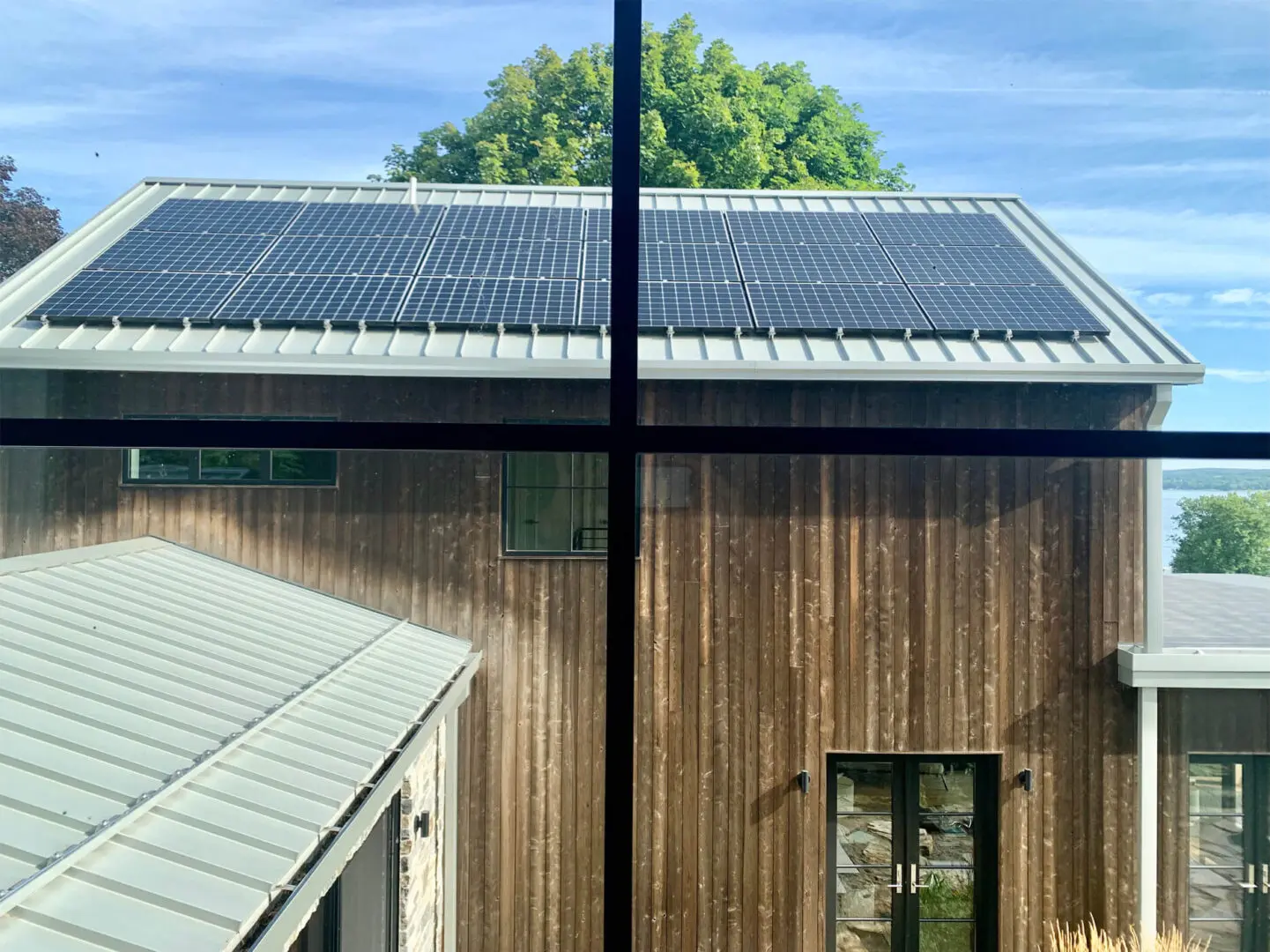
A LEED Platinum Certified Home Resource


A Sustainable Home
This is a story about a LEED Platinum certified sustainably built home. Why sustainable? Because we all need to work to cut carbon emissions now and because it’s good for the future of the planet. Suzanne and Jeff Watters put a lot of thought into the sustainable design and construction of 15 Longfellow Avenue. They hope that their thoughts can inspire other people to think about sustainability in their own projects.
In thinking through the design, they wanted the focus of the building to be on nature, the view of the lake, and the native plants and wildflowers surrounding the house.
They also wanted to keep as much of the legacy structure in place and stay true to the home's original footprint. There were other clean-lined, wooden clad houses on the hill near the project, and they tried to stylistically tie to some of the similar structures in the area.
Reuse and Local
The Watters tried to use as much as they could from the original structure, including the foundation, framing, and some furniture (which they sanded and painted). What they couldn’t use, they sold at an estate sale or gave away. Everything they needed for the project was sourced as sustainably as possible. They found local craftsmen to make much of the furniture and the cabinetry. A local metalsmith fabricated most of the lighting, stair railings, towel bars, oven hood, toilet paper holders, and even numbers outside the house. An artisan at a local stone company sourced and created the limestone counters. The oak flooring was sourced locally, and it is FSC certified. The wall tile was handmade by a company in Pittsburgh, and the Watters drove it up on one of their trips to the house.



Sustainably Sourced
What couldn’t be sourced locally was still intentionally and sustainably sourced.
Suzanne worked with a local furniture store to find dining chairs with recycled upholstery, and some of the light fixtures are made with recycled paper.
The floor tile has a percentage of recycled content, and the carpeting can easily be recycled as it is wool. In buying accessories for the home, the couple shopped at local art fairs to fill the house with pottery, area rugs, and art made by local artists. The paint used for the interior walls is zero-VOC, and the exterior siding is treated in a way that never needs to be repainted or restrained.


Renewable Energy
For the Watters, the most important sustainable aspect of the house is that it uses no fossil fuels. This was accomplished by the use of extra insulation (and an insulation “wrap” that went around the entire house from the top of the roof to the bottom of the foundation), high quality doors and windows, a multi-unit heat pump HVAC system, and a PV array (aka solar panels). Other important sustainable aspects of the house include an air filtration system, insulation around plumbing, low flow faucets & bathroom fixtures, and Energy Star appliances. There is an EV charging station in the garage to charge the Watters’ electric cars. More specific sustainable aspects of the construction can be found in the LEED Rating section of this website.